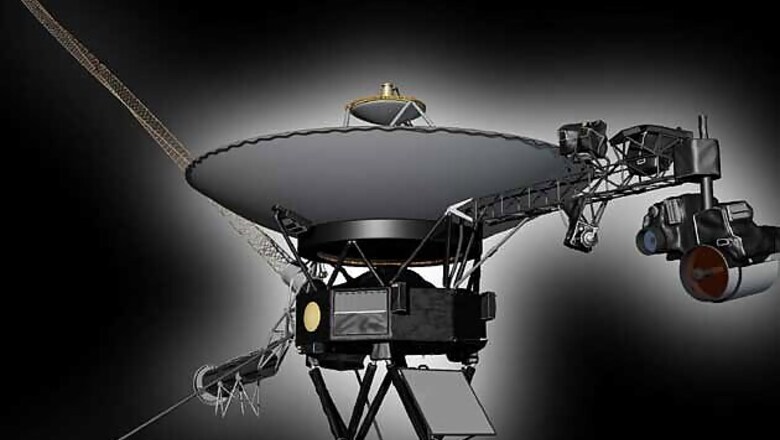
views
Washington: Thirty-six years after being launched and having travelled about 19 billion kilometres from the sun, America's spacecraft Voyager 1 has become the first human-made object to venture into interstellar space, according to NASA.
At a news conference on Thursday, NASA said new and unexpected data indicate Voyager 1 has been travelling for about a year through plasma, or ionised gas, present in the space between stars.
"Now that we have new, key data, we believe this is mankind's historic leap into interstellar space," said Ed Stone, Voyager project scientist based at the California Institute of Technology, Pasadena. "The Voyager team needed time to analyse those observations and make sense of them. Scientists do not know
when Voyager will reach the undisturbed part of interstellar space where there is no influence from sun," he said.
Voyager is in a transitional region immediately outside the solar bubble, where some effects from our sun are still evident. A report on the analysis of this new data, an effort led by Don Gurnett and the plasma wave science team at the
University of Iowa, Iowa City, was published during Thursday's edition of the journal Science.
"We literally jumped out of our seats when we saw these oscillations in our data. They showed us the spacecraft was in an entirely new region, comparable to what was expected in interstellar space, and totally different than in the solar
bubble," Gurnett said.
Voyager 1 first detected the increased pressure of interstellar space on the heliosphere, the bubble of charged particles surrounding the sun that reaches far beyond the outer planets, in 2004. Scientists then ramped up their search for evidence of the spacecraft's interstellar arrival, knowing the data
analysis and interpretation could take months or years, NASA said.
As Voyager 1 does not have a working plasma sensor, scientists needed a different way to measure the spacecraft's plasma environment to make a definitive determination of its location.
A coronal mass ejection, or a massive burst of solar wind and magnetic fields, that erupted from the sun in March 2012 provided scientists the data they needed. When this unexpected gift from the sun eventually arrived at Voyager 1's location 13 months later, in April 2013, the plasma around the spacecraft began to vibrate like a violin string.
On April 9, Voyager 1's plasma wave instrument detected the movement. The pitch of the oscillations helped scientists determine the density of the plasma.
Voyager 1 and its twin, Voyager 2, were launched 16 days apart in 1977. Both spacecraft flew by Jupiter and Saturn.
Voyager 2 also flew by Uranus and Neptune. Voyager 2, launched before Voyager 1, is the longest continuously operated spacecraft. Travelling at the speed of light, a signal from Voyager 1 takes about 17 hours to travel to Earth.




















Comments
0 comment